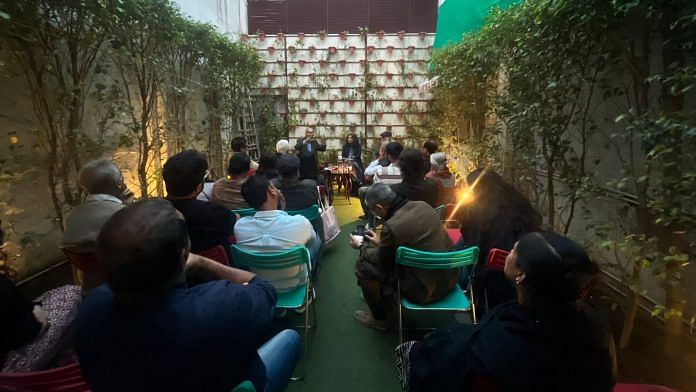New Delhi: The Red Fort wasn’t an exclusive fortress housing Mughal emperors who ruled over India—it was a place where the public could come to shoot the breeze. Located within Shahjahanabad, which became the capital of the Mughal Empire, the Red Fort was a miniature city in itself with stables, promenades, and markets. The gardens within the fort were also accessible to commoners, making the Red Fort a “social space” for the public, according to architect and author Anisha Shekhar Mukherji who spoke at the recent launch of his book The Red Fort of Shahjahanabad at The Bookshop Inc, Delhi.
“Red Fort was an important part of daily life for people in Shahjahanabad. They earned their living, interacted with the administration and strolled in gardens,” he added.
Described by UNESCO as a “symbol of power since the reign of Shah Jahan”, Red Fort has seen the city evolve from Shahjahanabad to Delhi. Despite recent attempts to sideline Mughal history in academia, popular culture and memory, the fascination around the 376-year-old monument hasn’t ebbed away.
Among the panellists at the launch of the book on 25 February were historians Sohail Hashmi and Partho Datta. The event was attended by students, scholars, and history aficionados.
“The reason for me to write about the Red Fort is that despite the data available to us, there is still a huge lack in understanding of its essential qualities. While much has changed, much remains the same,” said Mukherji.
Open spaces of Red Fort
The symmetrical white blocks of Connaught Place, inspired by the Royal Crescent in England’s Bath, and the tiled avenue of Chandni Chowk are vastly different from the Mughal city of Shahjahanabad. The Red Fort is characterised by a lot of open spaces — one can barely spot a well-enclosed room. Tourists visiting the fort, which was Mughal emperor Shah Jahan’s palace, are often confused about where the king and his family slept.
While a part of the monument was destroyed during the 1857 Revolt when Indians fought against the British, Mukherji explained, the concept of the fort itself was based on creating open spaces. “No space was entirely private. Private spaces could be opened for public and public spaces could be made private,” she said, adding that partitions were created within the fort to create private spaces since the Mughals were the descendants of Central Asian ethnic Mongols, who had a predominantly gazebo culture.
Mukherji also said that all the facades built in the Red Fort were connected. Moreover, the two main gates that exist even today, lead to Chandni Chowk and Delhi Gate, two important areas of Old Delhi.
Another important aspect of Red Fort includes its intelligent construction that keeps the palace cool during summer. The Mughals also planted a variety of trees — mostly orchards — to keep the heat and humidity inside the fort out, according to Hashmi.
The definition of ‘garden’ back then, Mukherji said, was very different from today’s standards of having a mowed lawn. Mughal gardens had fruit and flower-bearing trees and plants. “Shah Jahan would get up in the morning and go out to pick fruits from his orchards,” she said.
During the brief question-answer session at the end, an audience member asked the panellists what the kitchens looked like.
Mukherji said that detailed maps of Shahjahanabad drawn in 1846 show the Diwan-i-Am and the areas to the north of the Red Fort included kitchens, where food for the emperor would be made. However, architects have only been able to find traces of these in the ruins of the fort.
“What we have today is just a shadow, but even that is beautiful. Rest, we can just imagine,” Mukherji concluded.
(Edited by Humra Laeeq)



